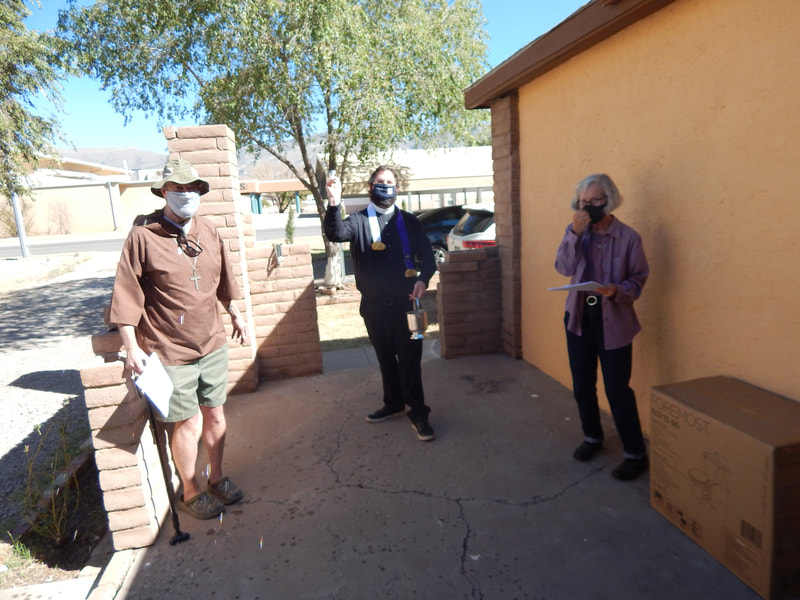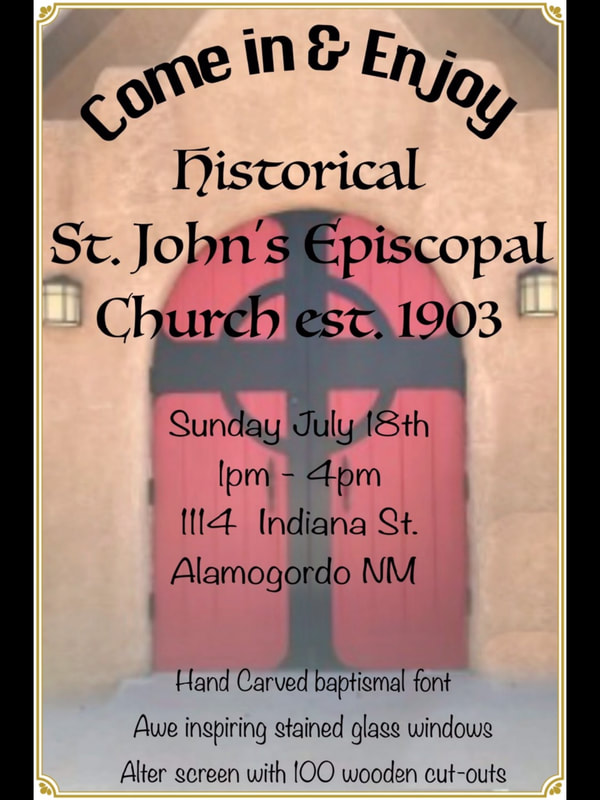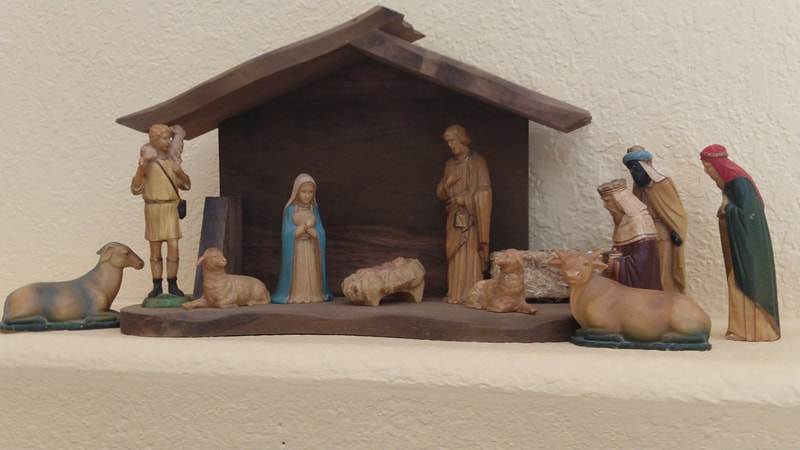Our Mission is to proclaim the Good News of the Gospel and to seek and serve Christ in all people.
St. John's Episcopal Church Mission Statement, January 2019
St. John's Episcopal Church Mission Statement, January 2019
|
Blessing a House
|
Open House Poster
|
Baby Jesus Farm
|
**********
About Us
We strive to combine a traditional form of worship with interpretations of scripture that encourages curiosity. Our parish is one that welcomes diversity of opinion, perspective, and life-experience. We strive to live out our baptismal covenant in which we pledge to seek and serve Christ in all people, loving our neighbor as ourselves.
The celebration of the Holy Eucharist is the central act of Christian worship. On Sundays we celebrate Eucharist using Rite I from the Book of Common Prayer at 8:00 a.m. We celebrate Rite II Eucharist with music at 10:15 a.m. All baptized Christians are welcome to receive Holy Communion. Sermons are preached based upon the Gospel with a message of love and inclusion being central to the Gospel interpretation.
Outreach into the community is an important part of how we show our faith. Our Outreach Programs include: St. John's Day School, a certified preschool serving as many as 75 students; St. John's Community Kitchen, serving free meals each week in partnership with several community groups to over 3,500 people a year; and assistance to those who need help with utility bills and other essentials.
The Community Kitchen meals are provided, prepared, and served by a number of groups, including those from other denominations and from Holloman Air Force Base. A number of local community service organizations also provide funding and other support for this outreach.
Our Art
St. John’s Episcopal Church, Alamogordo, New Mexico, built 1903
Stained Glass Windows, designed and created by The Rev. Fred Griffin
The Chancel Screen, c. 1961, designed by the architect, Edwin French; symbols designed by John Miksovic; executed by Richard C. Woodcock and assistants
Other features:
Hand carved Baptismal Font, 1905
One of our Open House visitors pointed out the special quarter saw cut technique on the Baptismal Font. This special technique exposed an unusual grain pattern. There was also a dedication plaque which said the Font was dedicated in 1905. Another visitor remarked that the Font was not sanded, which also added to its unique looking finish.
Sculpted Brass Stations of the Cross, on wooden plaques, artist unknown
Special Story About Stained Glass Windows in the Sanctuary
taken from a pamphlet written by
The Rev. Canon Thomas Lowe, former Rector of St. John's
"On the side walls of the sanctuary are high windows. On the gospel side are two sets of three windows. The older and smaller three set vertically were formerly behind the altar in the original building as constructed almost 110 years ago. Two of the windows have lilies representing the resurrection and the middle window has the Greek letters, iota, eta, and sigma, the first three letters of Jesus’ name in Greek. The larger set of three set vertically represent the three persons of the Holy Trinity with the burning bush representing the Father, a cross and lilies representing the Son, and a dove representing the Holy Spirit."
******


